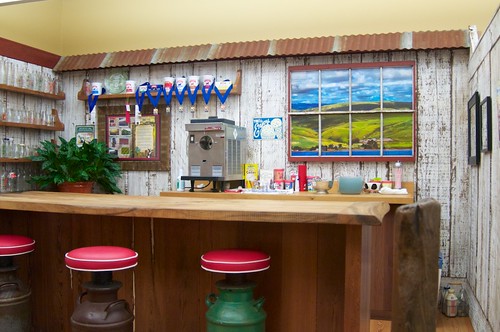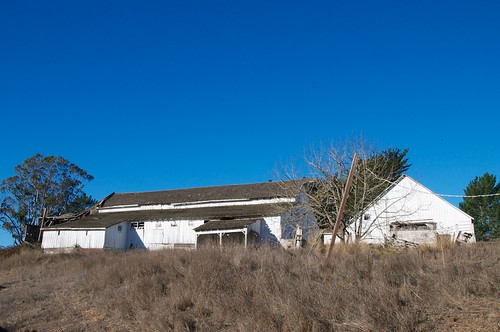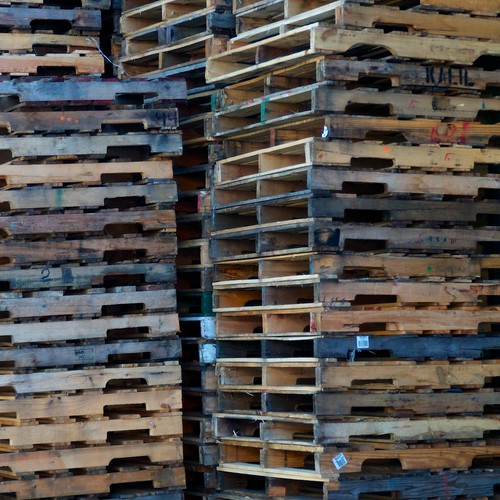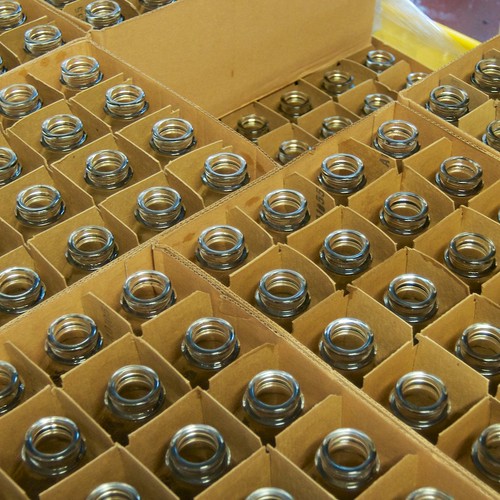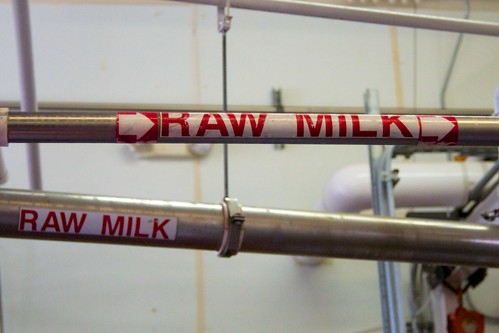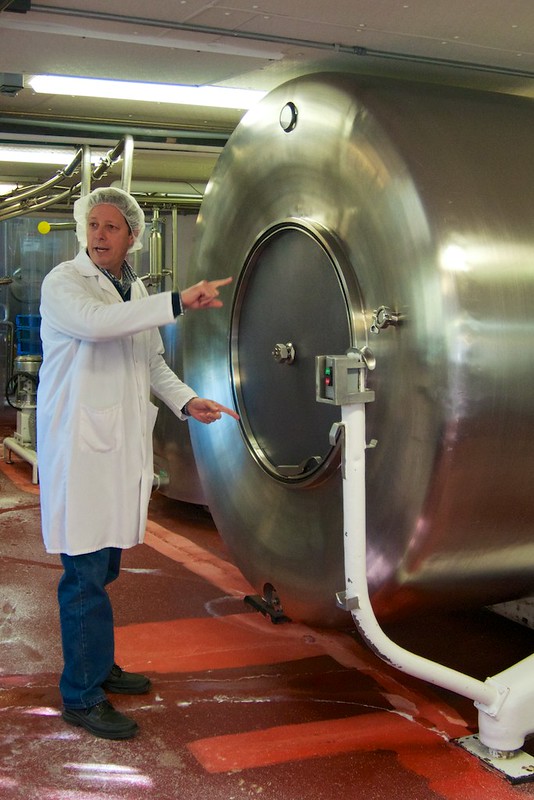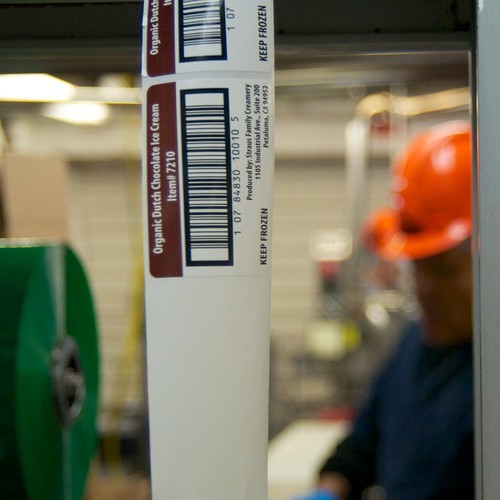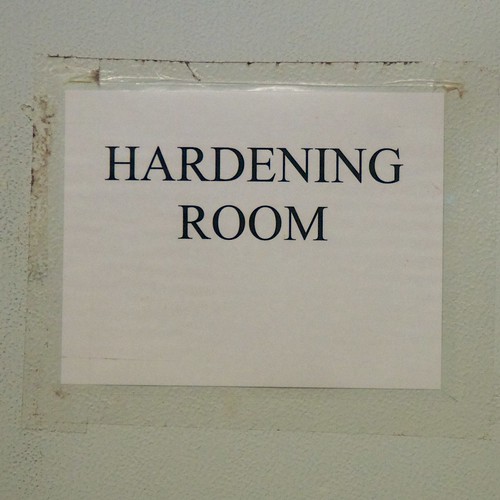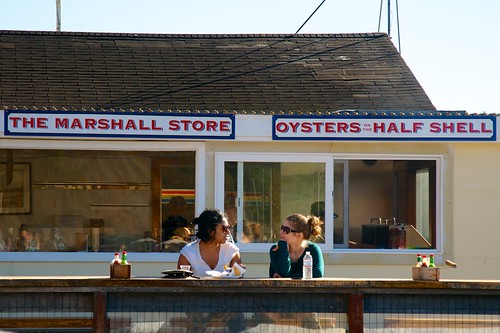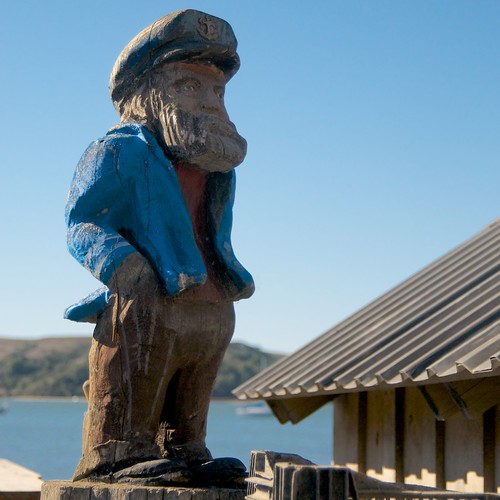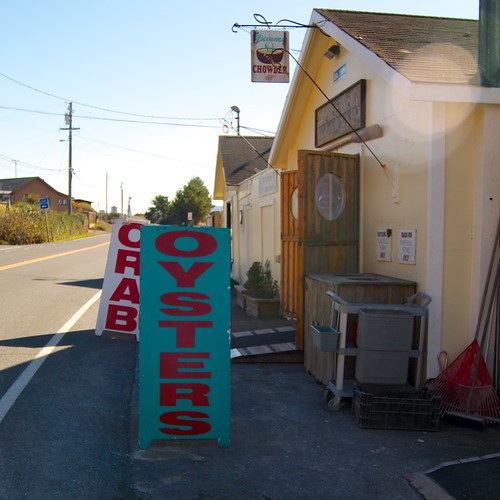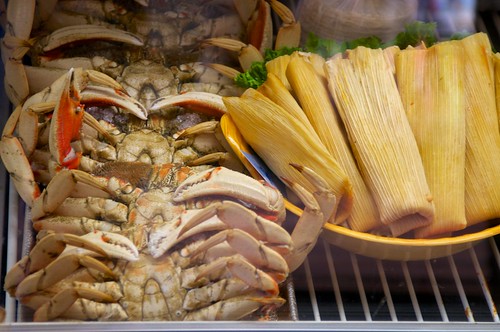A visit to Straus Family Creamery
I suppose like most Americans, I was raised on supermarket ingredients, commoditized to the point that I was more aware of the diversity in packaged foods than to the foods that came from nature. Milk was just milk, and that's all. It didn't matter when you bought it, or where it came from. It was white, and fluid, and as long as it wasn't sour, it got the job done. But ask me the various flavors of Doritos? I was on it.
But when you become more mindful about food, you come to understand and realize how very diverse food is, even basic things. Today, and certainly here in the Bay Area, there is a great awareness of heirloom vegetables, artisanally sourced ingredients, micro-niches of things as mundane as salt and pepper. We strive to find the sweet spot, the intersection of perfect seasonality, ripeness, and optimal expression of each food.
I've been a Straus loyalist for years now. I'll admit that they almost certainly hooked me with their quaint glass jars, both sustainable and appealing to my retro-modern sensibilities, but I quickly came to realize that their product was absolutely superior. Milk is not just milk. So when a colleague invited me to join on a tour of the creamery, I leapt at the opportunity.
So it was I hit the road early to Petaluma, to be at their corporate office by 9 am. The office is in a rather nondescript industrial park not far off the 101, but they left the bland and boring at the door. Working with local Heritage Salvage, they crafted a quaint dairy bar in one corner. Heritage not only sources the materials, but provides you with the complete provenance of each of them. And so it is that they installed not just charm, but another layer of sustainability.
The milk jug stools just slay me.
I was joined by Kim O'Donnel, famously of Meatless Monday, Dennis Murphy of food distributor Greenleaf, and Naomi Starkman of Civil Eats, which recently raised more than $100,000 on Kickstarter to bring the project to financial sustainability -- the most money ever raised in a Kickstarter by a media project. (We supported, and I'll talk more about our spoils soon.)
From the Petaluma office, it's about a 20 minute drive into the rural backroads of Marin County to get to the actual creamery. Nestled in the hills of Marshall, the creamery occupies a the former commercial kitchen that once belonged to Synanon, a drug and alcohol rehab facility that turned into a cult, and was ultimately shut down by the feds. Today, it couldn't look more bucolic.
We learned a bit about the history of the company, like how Albert Straus took over the family farm, and decided to turn it organic, becoming the first organic dairy in the American West, and ultimately the first 100% organic dairy in the entire U.S. Today, Straus works with seven local family farms, including their own, all organic. With some 2500 cows across all the herds, Straus processes around 15,000 gallons of milk a day, selling it to retail as well as specialty and wholesale clients.
As we learned, we tasted. First, the milk. All of their milk sold retail is cream-top, unhomogenized. I am not a milk drinker, but this is undeniably delicious, sweet, with a rich mouthfeel. We also tasted the Barista Milk, which they sell only to food service clients. Baristas begged for a homogenized milk, ready to steam, so Straus brought a team of baristas in to taste-test the milk homogenized at increasingly low pressures until they found a balance of milk that was both fully homnogenized yet retained the character of the original product.
If you're unfamiliar with how homogenization works, milk and cream are forced through a tiny hole, usually under very high pressure, and more than once. In so doing, the fat globules are broken down into tiny droplets that do not coagulate, and remain in suspension in the milk. By using a lower pressure, the fat globules are more irregular and slightly larger than in commodity homogenized milk, giving a better flavor and texture.
Their milks are also pasteurized at a lower than usual temperature, again helping to retain the character of the milk. So-called ultrapasteurized milk is blasted at temperatures so high, they not only kill any pathogens, but also denature all the proteins and anything resembling flavor.
On to the yogurts. Straus makes two main types: Their standard European-style yogurt, in whole milk, low fat and non-fat, and both regular and low-fat Greek yogurt. As a rule I prefer regular yogurt to Greek style, the latter being too pasty for my tastes, but Straus's has a fantastic texture and smoothness, with a pronounced lactic tang. The lowfat has a slightly grainier texture, but not unpleasantly so. Still, I cannot stay away from their European-style yogurt (whole milk, please).
The sour cream was surprisingly un-sour, almost the mildness and texture of English clotted cream. I might prefer to use the Greek yogurt in lieu of sour cream in recipes, but would gladly use the sour cream on pies and cakes as an alternative to whipped cream.
And oh, the butter. You can thank none other than Alice Waters of Chez Panisse for convincing Albert Straus to make a European-style butter with higher butterfat content.
Luckily for us, that day was ice cream production day, so we got scoops of their chocolate ice cream right off the line. Somehow, I managed to find the force of will not to eat an entire pint. Frankly, I don't know how any of the staff there manages not to balloon.
Fun fact: Bi-Rite Creamery sort of put the Straus ice cream base on the map, but they were not the first to use it, as I had thought. Little Fairfax Scoop stakes that claim.
Heads and bellies full of dairy, it was time to tour the facility. We got suited up with lab coats and hairnets, and off we went.
I'm sort of a geek about food production of any scale. It fascinates me to see how it all works. I love the geometry of production.
And all the impressive equipment.
Speaking of impressive equipment, check out this massive butter churner. Cream goes in, huge gobs of bright yellow butter come out.
The butter is put in the stamper. Wrappers line the rectangular dies, butter goes in, and they come out as perfect little sticks.
The aforementioned ice cream in process.
And yes, I am still apparently 12 years old.
I would have been more than content to just taste the products and tour the facility, but they were gracious enough to take us to lunch at the Marshall Store, on the shores of Tomales Bay. I think they just wanted an opportunity to enjoy the astonishingly beautiful November weather. Either way, I wasn't complaining.

